How does someone become a leader without even seeking it? In March 2025, we set out to meet Saraswati Sonar to find out.
We hiked over a hill ravaged by monsoon-triggered landslides in Helambu Rural Municipality, located in central Nepal, making our way to Dalit Basti. Though the skies were clear that day, the risk was evident. We were on our way to meet Saraswati Sonar — a trusted leader in a settlement that has long endured the threat of landslides. Such was their trust in her that she was elected as the chairperson of the local Community Disaster Management Committee (CDMC) by her community, even though she was not present at the meeting that founded it. Community Disaster Management Committees (CDMCs) are community-based grassroots organisations that play a crucial role in empowering communities through preparedness and timely assistance during emergencies.
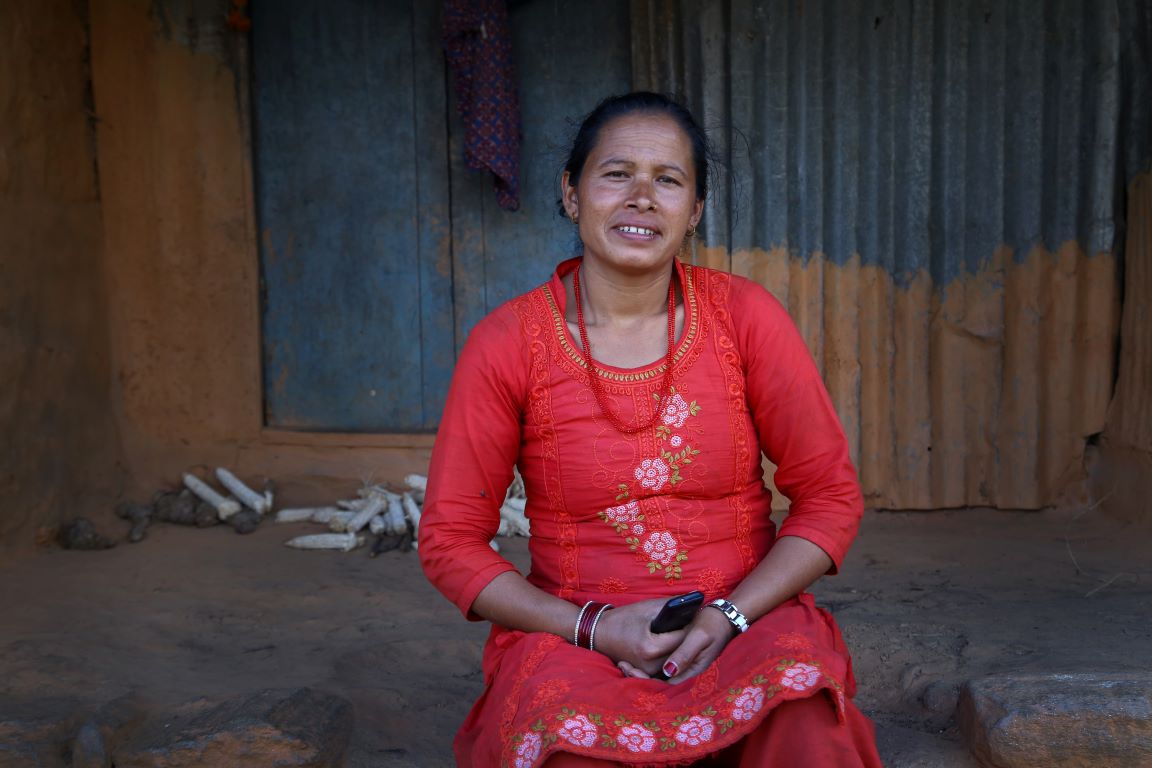
“Our older generation lived here despite landslides during monsoon, because they couldn’t afford to buy land in safer areas. My house used to be right beside the path you just walked,” Saraswati shared, pointing to a narrow path, now barely visible after being repeatedly eroded by landslides. After the 2015 earthquake destroyed her home, she relocated to a new settlement in the plains below the hill, now known as Saraswati Tole. Saraswati may have moved to a new, safer place, but her heart still lies in the old settlement. She goes to her new house only late at night to sleep; her fields, crops and livestock still wait for her in Dalit Basti, along with 12 other families.
As the trained chairperson of the CDMC — formed with support from the Landslide Early Warning Systems project, implemented by Practical Action — Saraswati plays a vital role in keeping her community informed. She regularly calls the government emergency hotline 1155 to get weather updates or before making any farming decisions. She also spreads the message — alerting the elderly, pregnant women, and families with small children when a warning is issued so they can evacuate to a safer place.
Her calls are especially important for people who can’t read the warning messages sent by the Department of Hydrology and Meteorology (DHM) to their phones, or don’t have access to a phone at all.

Saraswati is also a trained first responder, having completed basic healthcare training organised by Practical Action. There, she learned how to provide first aid — from bandaging cuts to responding to snake bites. When she returned home, her daughter and relatives were eager to know what she had learned. “I sat down and showed everyone how to bandage wounds and give basic care,” Saraswati said with a smile.
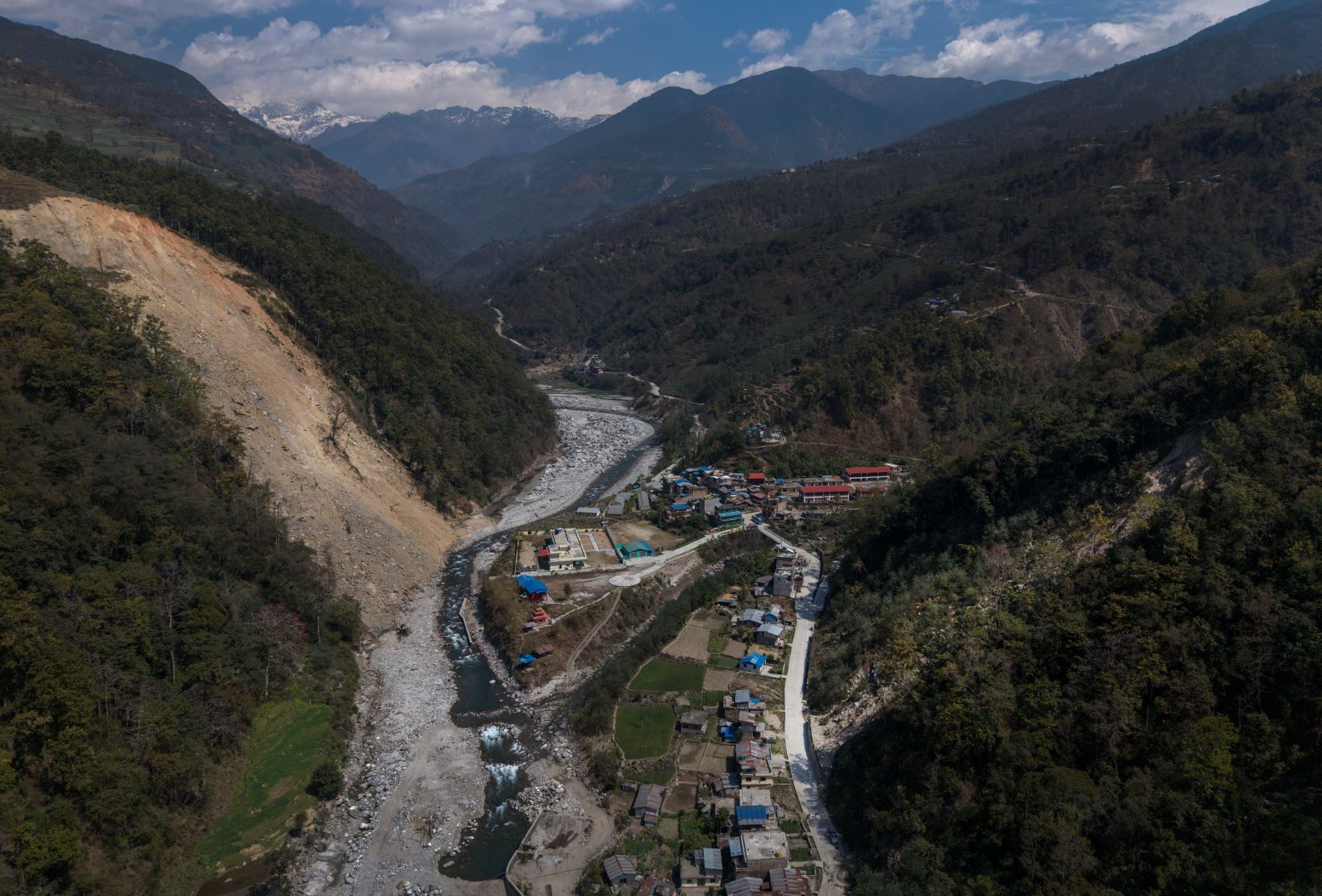
Sitting with Saraswati in her old mud house on the steep slopes of Dalit Basti, her words begin to take on even deeper meaning. Every settlement we visited during this field trip underscored the urgency and relevance of the Landslide Early Warning System in these high-risk areas. With the constant threat of landslides looming, some families like Saraswati’s have already been displaced, while, for others, leaving their only land is not an option.
Such is the story of Nirmala Dhital, who lives at Tipeni, Panchpokhari Thangpal Rural Municipality, situated directly in front of a hill scarred by past landslides. Four years ago, Nirmala witnessed a landslide for the first time — an experience she will never forget.
The night of September 2021, Nirmala was not in her house. Her sister was alone when the Tipeni landslide swept through the area. Roads were blocked, walls fell, and muddy water reached her garden. By the time Nirmala returned the next morning, the damage was already done. The disaster left the entire community shaken, and it became a turning point in their understanding of risk. Too scared to remain in their homes, people slept on higher ground for days. For two years, Nirmala and her family couldn’t live in their own home.
“I always felt there should be an early warning system for landslides just like there are for floods. Thus, when Practical Action and a local organisation, the Community Development and Environment Conservation Forum (CDECF) approached us, we agreed to work together in risk communication. I wanted to be part of the early warning system task force because I truly believe early warnings can save lives,” Nirmala shared.
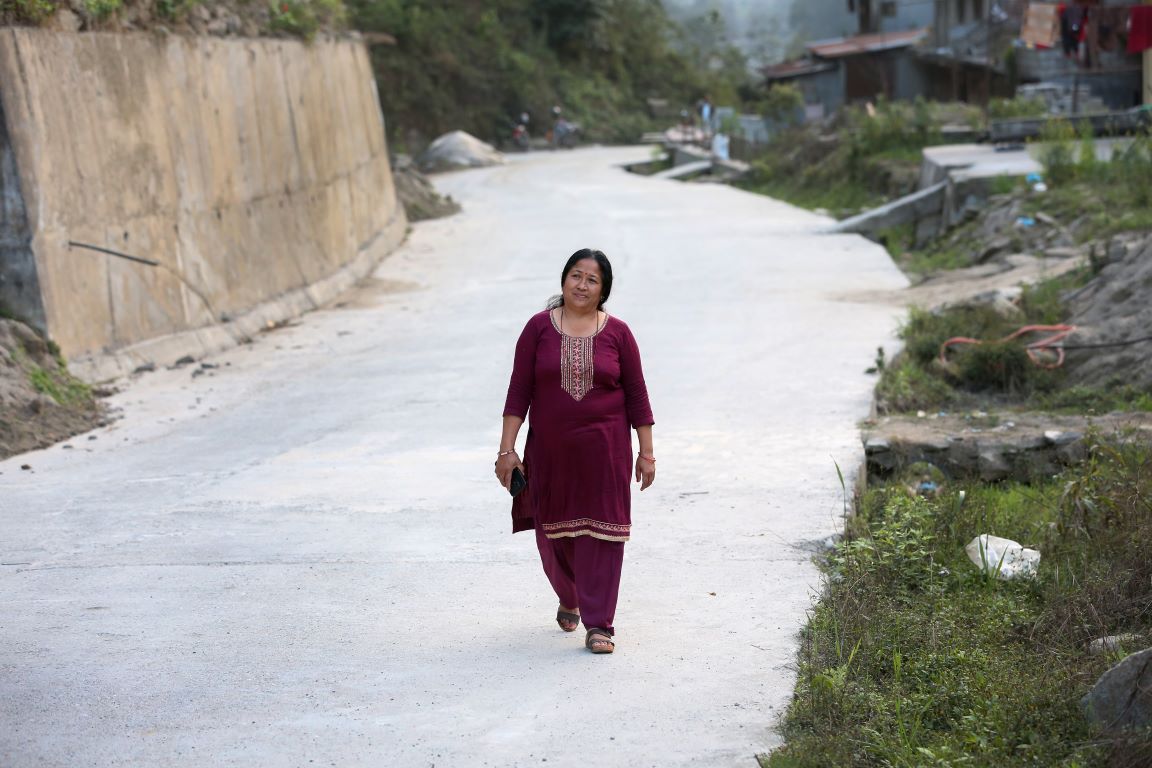
Last year, when the water level in the Indrawati River beside her home began rising in the middle of the night, Nirmala acted without hesitation. “We were monitoring the river closely, and I recorded a video to share on social media,” she recalled. “I also sent a message in our Viber group to alert other community members living along the river basin.” With torches and go-bags in their hands, Nirmala and other CDMC members helped people move, especially women, children and the elderly to safer ground. “As it rained continuously, we feared the landslides. It was especially difficult for elderly people to stay safe outdoors in such heavy downpours,” she said.
Now, a new emergency safe shelter has been built in her village by Practical Action. With this, Nirmala believes that her community is one step closer to their safety.
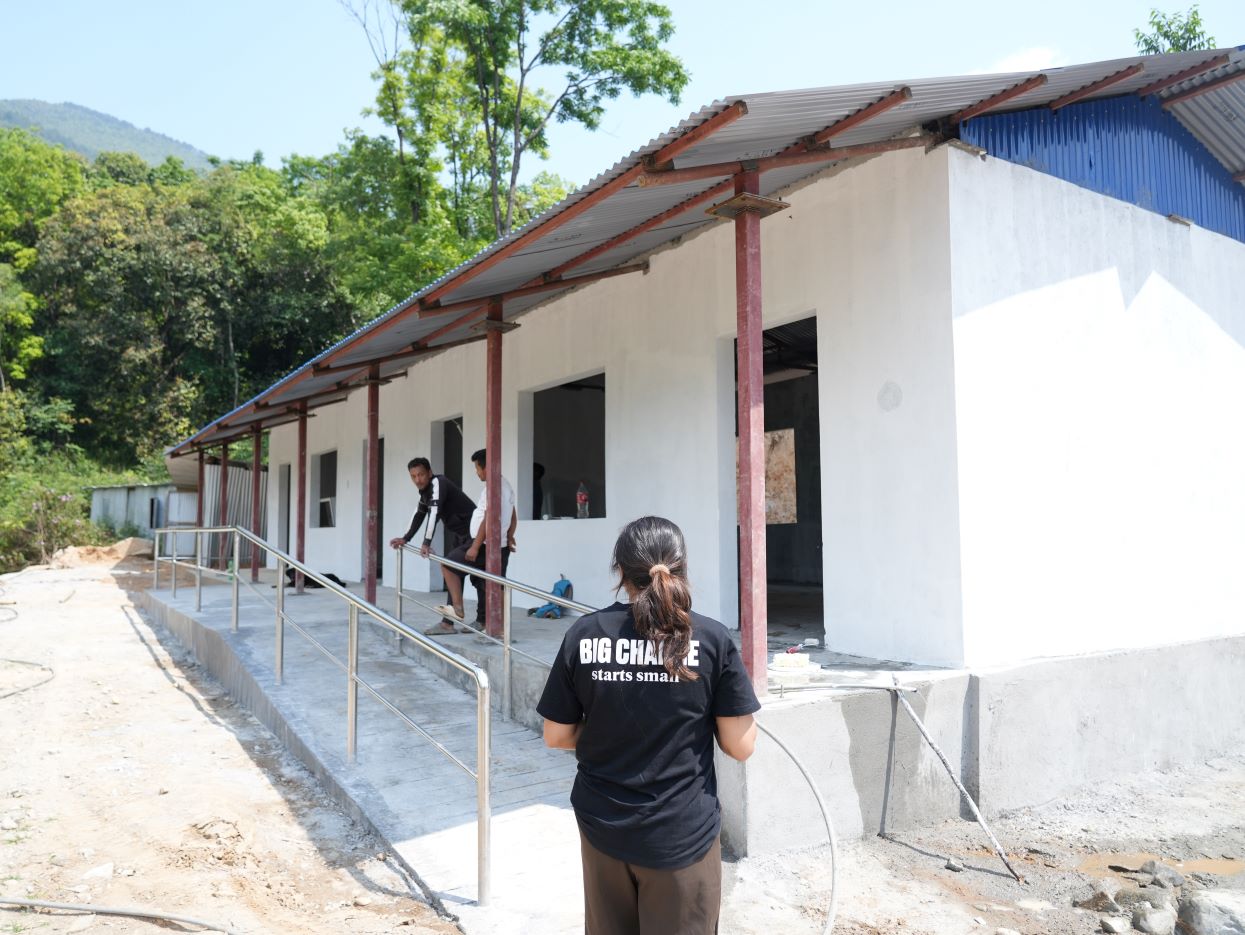
But the constant threat weighs on Nirmala. She admitted that she often has nightmares about the devastation floods and landslides can bring. With government relocation plans now on hold, Nirmala and her community are trying their best to survive in their own homes.
“In the past, those affected by disasters were left to deal with it alone. But now, we understand that the risk is shared and so is the responsibility to prevent loss of life,” Nirmala shared. “The project may end, but through the CDMCs, we’ve come to see this as our collective duty. The CDMCs and task forces have also helped build a sense of community among us.”
After meeting with Nirmala, we continued our trip. Heading north from Tipeni, we arrived in Yangri village, nestled at the confluence of the Yangri, Larke, and Indrawati Rivers. As we sat down with the local CDMC chairpersons, we didn’t immediately notice Rina Syangbo. Quietly seated near the group, she listened intently, occasionally contributing to the conversation with calm confidence. It was only after an hour that we asked if we could speak with her directly — and she agreed.
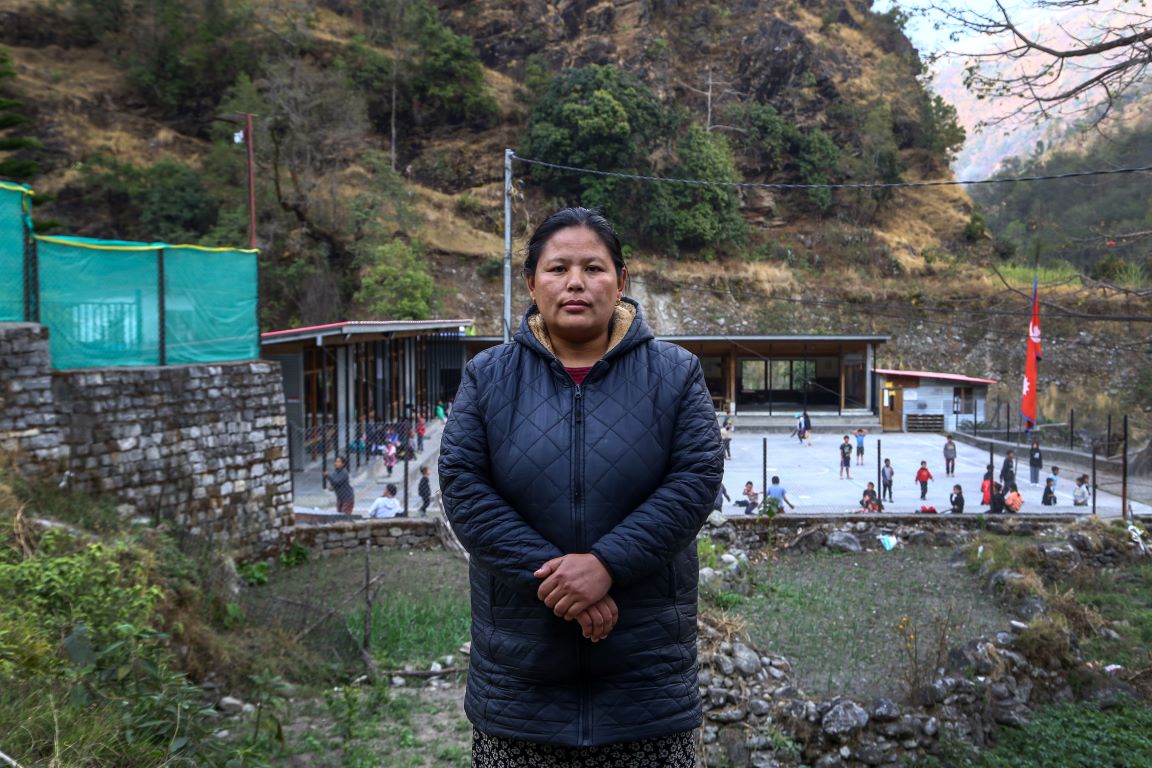
Rina’s community, called Yangri, a village at Panchpokhari Thangpal Rural Municipality, sits close to nature, surrounded by rivers and hills. Due to its steep terrain, proximity to riverbanks, and isolation, Yangri is highly vulnerable to landslides, flash floods and earthquakes.
In this risky environment, Rina plays an important role in keeping her village safe. She is part of the CDMC as an early warning task force member. “Now if there’s any flood or landslide risk, upstream community members inform us in advance,” Rina said. She and other CDMC members then share these updates with the wider community.
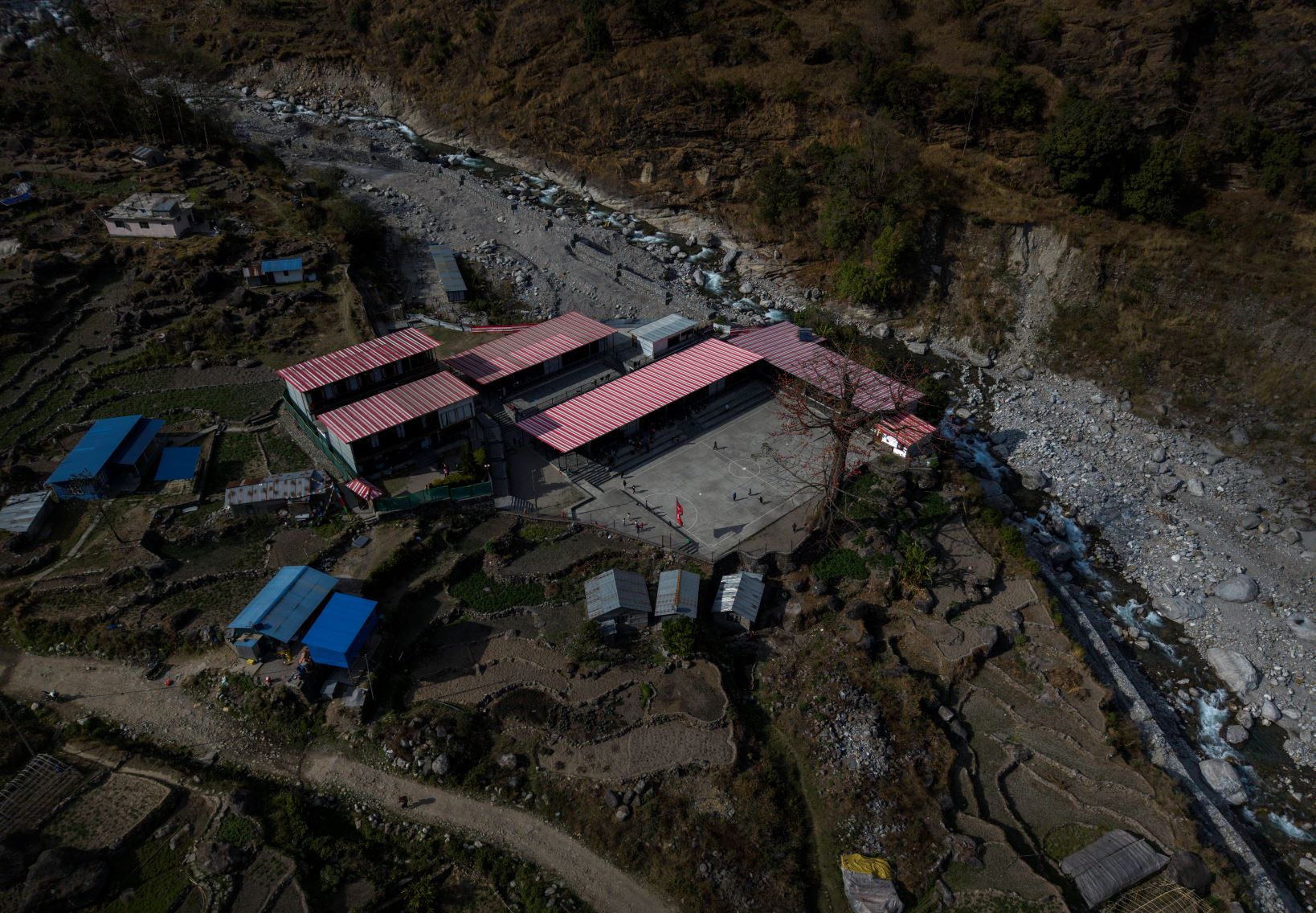
One of Rina’s biggest worries is the safety of the local school, which is located right at the bank of the Indrawati. Currently, she serves as a member of the school management committee and her daughter is a sixth-grade student there. In past floods, three school buildings have been washed away. Now, protecting the children is the top priority of the villagers. The school has 134 students from nearby villages, and 110 of them stay in the school hostel.
To keep the children safe, the whole community works together in case of emergency. Through experience, the villagers have learned about the safer places. When in a safe location, women manage the community’s needs. “Women plan and allocate who is going to live where. We also have to bring kids down again to feed them in the school canteen and then move them back to a safe location.” Rina shared.
As she speaks, it’s clear how deeply Rina cares for her village and people. She is not only thinking about today but also about the future of the children and the whole community. Her role may be quiet, but it is powerful.
Community Disaster Management Committees members including Saraswati, Nirmala, and Rina, recognise that their primary responsibility for preventing disasters, is to inform their communities and ensure the safety of those most vulnerable—especially the elderly, children, and women. Disasters often hit these groups the hardest; studies have found that women and children are 14 times more likely to die in disasters than men. Yet, despite being among the hardest hit, women often step into critical but frequently overlooked and undervalued leadership roles in times of crisis.
At Practical Action, we believe in recognising the strength, knowledge, and leadership that women bring to disaster resilience and in ensuring they have the resources and respect they need to lead. With our focus on gender transformation, we’re not just helping women survive disasters — we’re supporting them to lead resilience efforts in their communities and become powerful agents of change in disaster risk reduction.
These stories are part of the “Developing a Community Centric Early Warning Protocol for Landslide Early Warning System (EWS)” project”, led by Practical Action with support of Australian Embassy. This project has helped form Community Disaster Management Committees (CDMCs) and task forces in the communities in Helambu and Panchpokhari Thangpal Rural Municipalities in order to empower them through preparedness and timely assistance during emergencies.